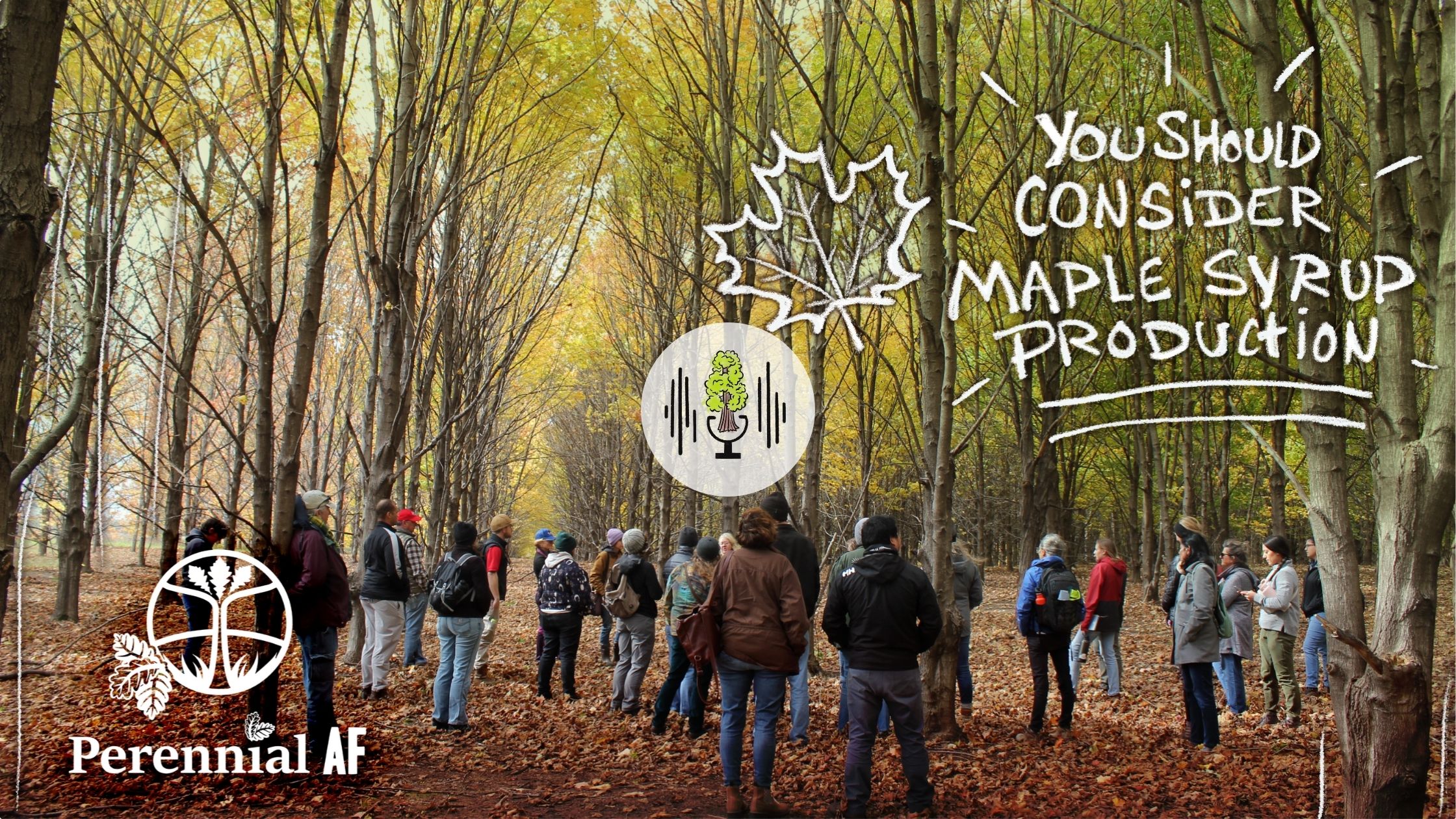In our latest podcast episode, I talk with Tony Johnson, a forester with the University of Wisconsin-Madison Division of Extension whose work is focused on supporting maple syrup production in the state. Tony believes that maple syrup production can be a great gateway for people into the world of agroforestry, and that it can pave the way for agroforestry practices like forest farming, mushroom cultivation, and edible buffers and windbreaks.
Talking to Tony made me think about how we often talk a lot about the “agro-” part of agroforestry, and not as much about the forestry part. If agroforestry blurs the boundaries between forestry and farming, then there should really be opportunities for people on both sides of that boundary.
Transcript has been edited for brevity and clarity.
Tony Johnson: For folks that are interested in agroforestry and diversified farming on a small or medium scale, I’d recommend they consider trying maple syrup production. Whether you have five maple trees or five hundred, it’s a really great way to get out in the woods at a wonderful time of year. And it’s an activity that again and again we hear from people in Wisconsin that it’s about bringing family together, that intergenerational activity that can, you know, kind of link grandparents and parents and kids and get the whole family involved. And so I think that’s one thing I would say, is consider trying it just as a hobby. It’s a relatively low barrier to entry.
I think the next thing for the agroforestry crowd, and particularly folks who are planning these types of systems, is to think about how maple trees could be incorporated in some of the agroforestry practices. In particular, I think about forest farming. It makes a lot of sense, right? Because maple syrup gives you a canopy crop that you can grow understory crops beneath. But then also, what about riparian buffers? Sugar maples are harvested for sap, but red maples and silver maples are tapped as well. So if you have a wet riparian area with a lot of silver maples, that might be a crop for an area that wouldn’t be suitable for many other things potentially.
I could imagine a checkerboard agricultural rural landscape with fence lines filled with mature maple trees that are connected to central collection hubs, and just the opportunity to get maple trees into some of these other agroforestry practices. I’d like folks to just consider that. I mean, it’s the state tree. It’s a great tree in a yard setting or in a woodland. I’m a big advocate of maple on many fronts.
Links:
Tony Johnson UW Extension profile: https://erc.cals.wisc.edu/staff/tony-johnson/
Wisconsin Woodland Owners association: https://wisconsinwoodlands.org/
Wisconsin DNR Service Foresters: https://dnr.wisconsin.gov/topic/forestlandowners/dnrforesters
IL Forestry services: https://dnr.illinois.gov/conservation/forestry.html

